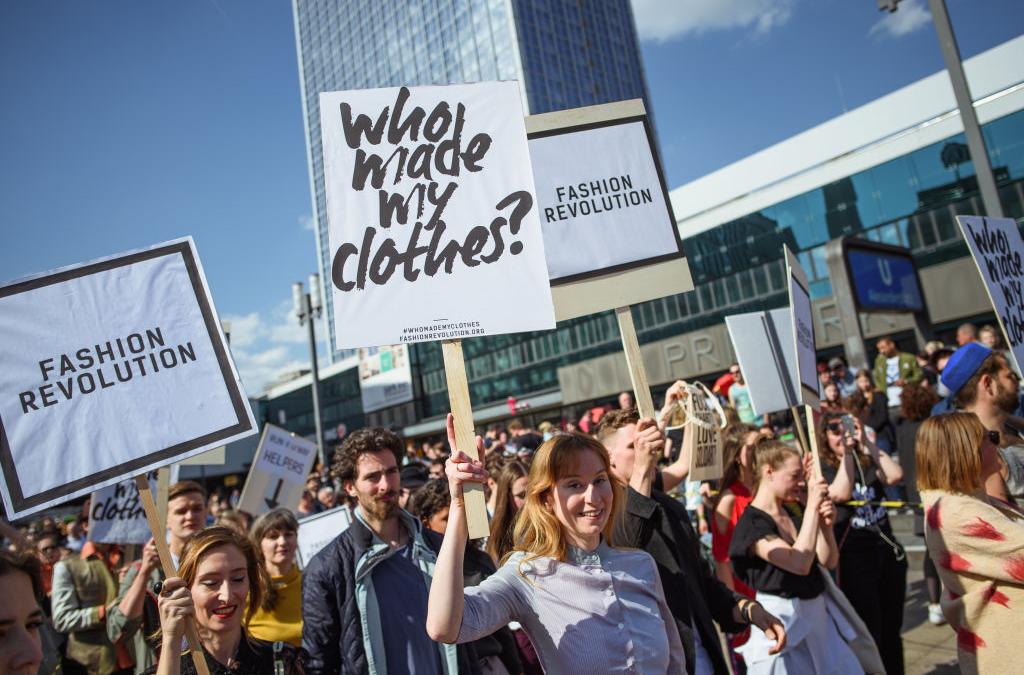
When it comes to fashion, we all know we *should* be trying to shop as ethically and sustainably as possible, but in a world full of greenwashing and sneaky advertising tricks, it can be really bloody hard to know which brands are ethical, and which brands just want you to *think* they are.
So, rather than shitting on everyone who still participates in fast fashion, I thought I’d collate a handy dandy guide to navigating the world of ethical clothing consumption.
Do You Need It?
First and foremost, you need to ask yourself if you need it. Sustainable and ethical shopping is great, but if you’re buying something that you’ll only wear twice before chucking it in the bin, that’s not very great for the planet (or your wallet).
The easiest way to tackle this is the 30 wears test. It does what it says on the tin, really.
Ask yourself: will I wear this item 30 times or more? If the answer is no, don’t buy it.
Sure, this gets a little hard when you’ve got weddings, birthdays and nights on the town, but it’s worth trying to stick to it wherever possible. For example, I rarely buy dresses for clubbing/drinking-related purposes, because if I buy a skirt/top combo, I can mix and match and get more use than a dress.
If you *do* need a dress or something you’ll only wear once or twice, consider renting it. Sure, it costs you more per wear, but if it’s a dress for a wedding that you’ll only wear once before it sits in the back of your wardrobe for the rest of eternity, you’re actually saving money.
And while you’re at it, have a think about whether or not you could pick up something from an op shop. It’s a win-win for your bank account and the greater good of society.
Who Made It?
So you’ve decided you *do* need this item. The next question is: who made it?
It’s always worth doing a bit of a Google on the brand. Do they have an ethical and sustainability policy on their website? How did they rank on the Baptist World Aid Ethical Fashion Report (a good, if imperfect, guide)?
You can get a pretty good gauge of a brand’s ethics and sustainability from this, but it’s also worth looking into where and who made your clothes.
Fashion Revolution’s Who Made My Clothes initiative has helped to make brands more transparent with their factories and workers to ensure everyone is getting a fair go. This means that a lot of brands will publish their supplier factory list, so you can cross-reference and make sure the factory workers (especially overseas) are being treated and paid fairly.
Anything made in Australia is generally a safe bet (and is good for our local economy), but that doesn’t mean you need to boycott things made overseas, just make sure you’re doing your bit to keep it fair.
What’s It Made Of?
Fabric is another red flag when it comes to ethical and sustainable shopping.
You should always opt for natural fibres wherever possible because, unlike synthetic fibres, they will biodegrade without polluting the planet with nasty plastic microfibers.
However, it’s not quite that simple because some natural fibres – namely, cotton – can be tied to pollution, exploitation, excessive water usage and even slavery to this day. You can read more about the ethics of cotton here.
If you’re looking for something super ethical and sustainable, opt for organic hemp, linen, recycled cotton or Tencel.
And while you’re at it, you might want to make sure to check the dyes used in your clothes so you can steer clear of the five nasties (acrylic, azo dyes, phthalates, nanosilver and anything that claims to be anti-static/stain-resistant/wrinkle-free/flame-retardant). We don’t have time to deep dive into it here, but – as HuffPost explains – they’re really bad and sometimes even carcinogenic to humans. No thank you.
How Durable Is It?
Now we’re getting to the easier stuff! (Thank fuck.)
Whenever you’re buying clothes, it’s worth checking how durable and well-made the item actually is.
The main goal when it comes to ethical and sustainable shopping is to buy less and make it last longer, so looking for quality and durability is a must.
It’s also worth considering teaching yourself some basic sewing skills so you can quickly fix your garments, rather than replacing them when they get a small rip or lose a button. Again, this saves *you* money and saves your clothes from ending up at the dump.
Seriously, being sustainable is fkn GREAT for your bank account. Who knew?
How Much Is It?
This last point is simple but is perhaps the most important: price.
Now, as a certified cheap bitch, I fucking LOVE a good bargain. But it’s important to remember that low prices mean low regulation. If you’re buying a t-shirt for $10, that means that somewhere along the production line, somebody is getting exploited.
And this isn’t just low wages. In some cases – like the tragedy at the Rana Plaza factory in Bangladesh where 1,100 factory workers died – it can be lethal.
I assure you, no bargain is worth the moral cost of 1,100 deaths.
Obviously, not everyone has a huge disposable income for fashion, but if you can afford it, invest in brands that uphold a high ethical standard. Or, if you’re a cheapo like me, invest some time in finding the best op shops in your neighbourhood.



